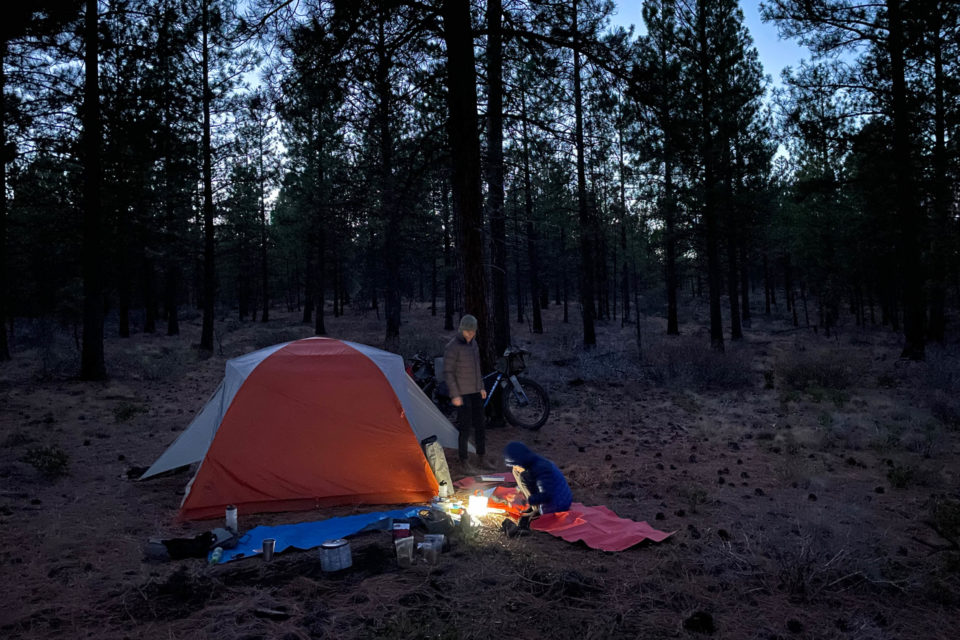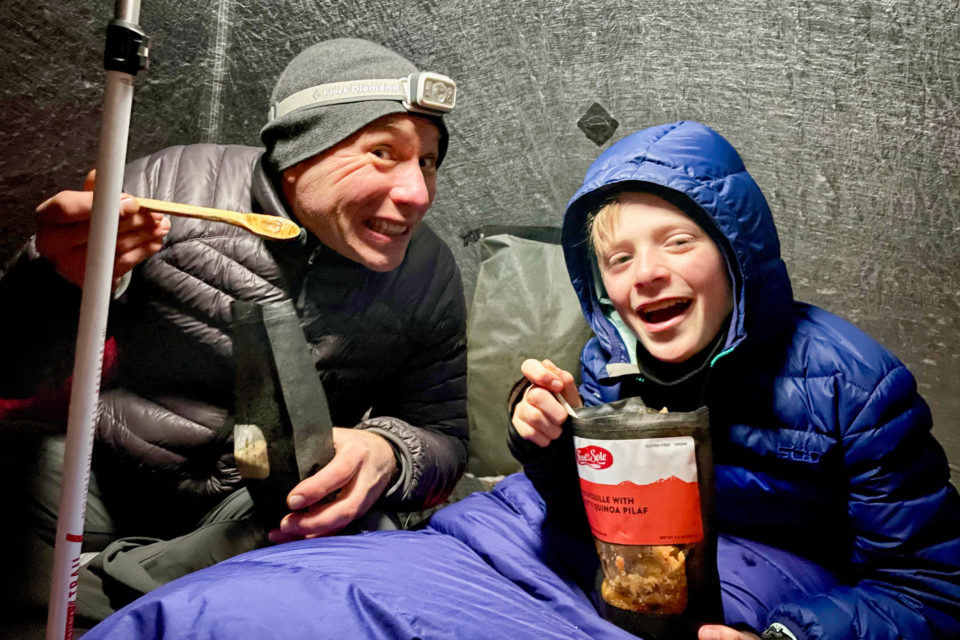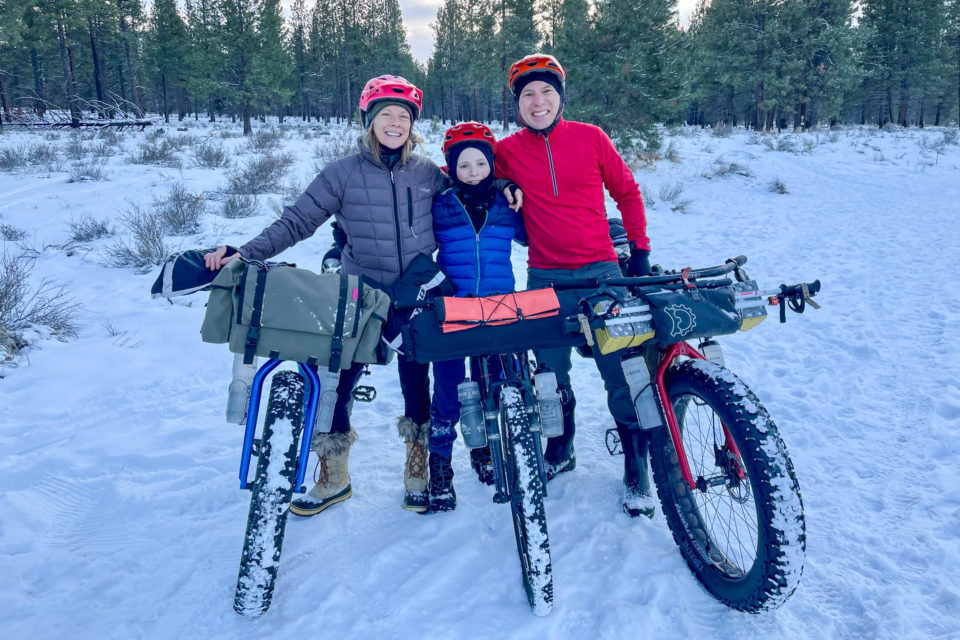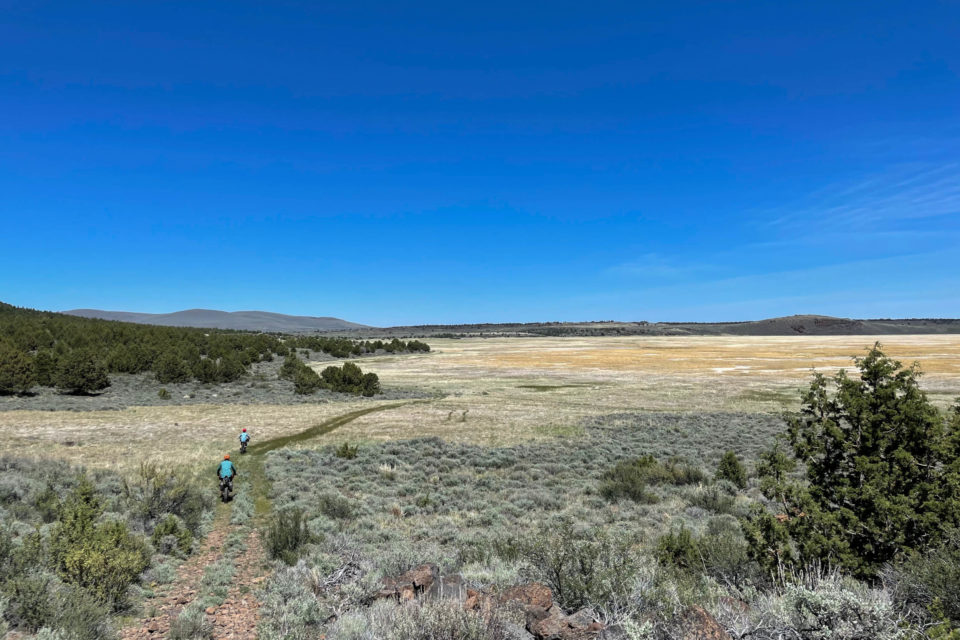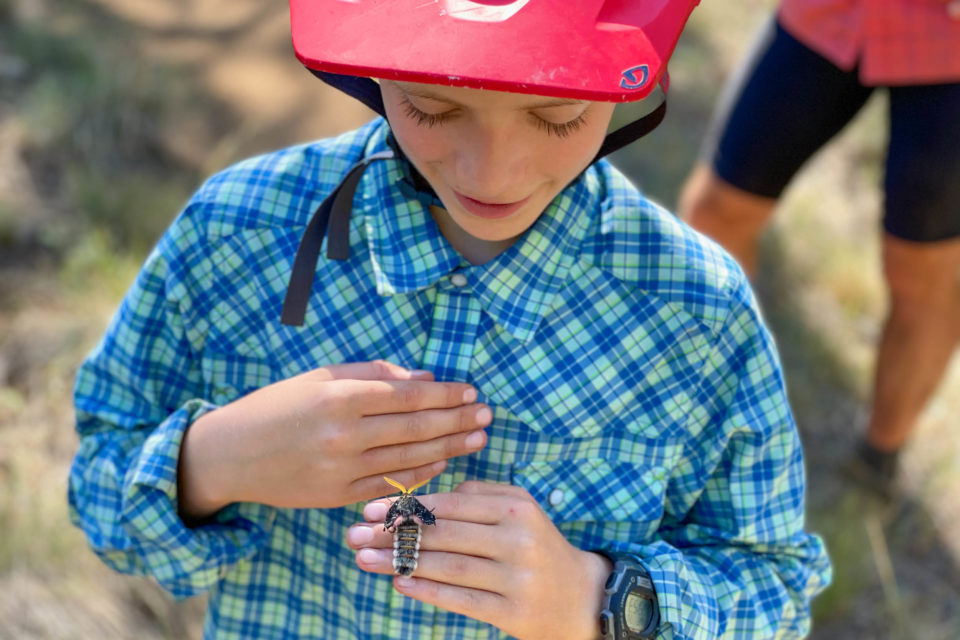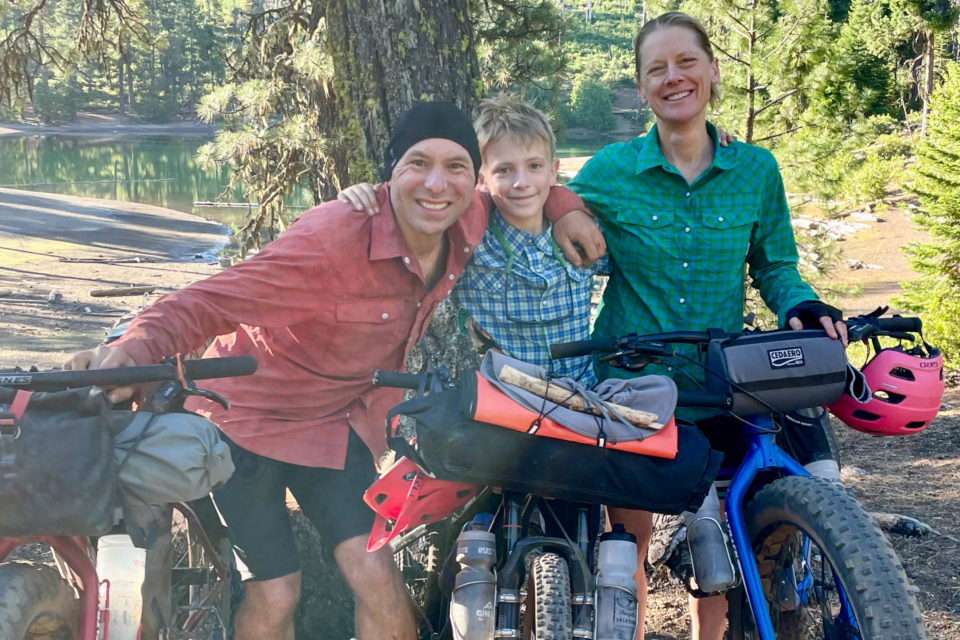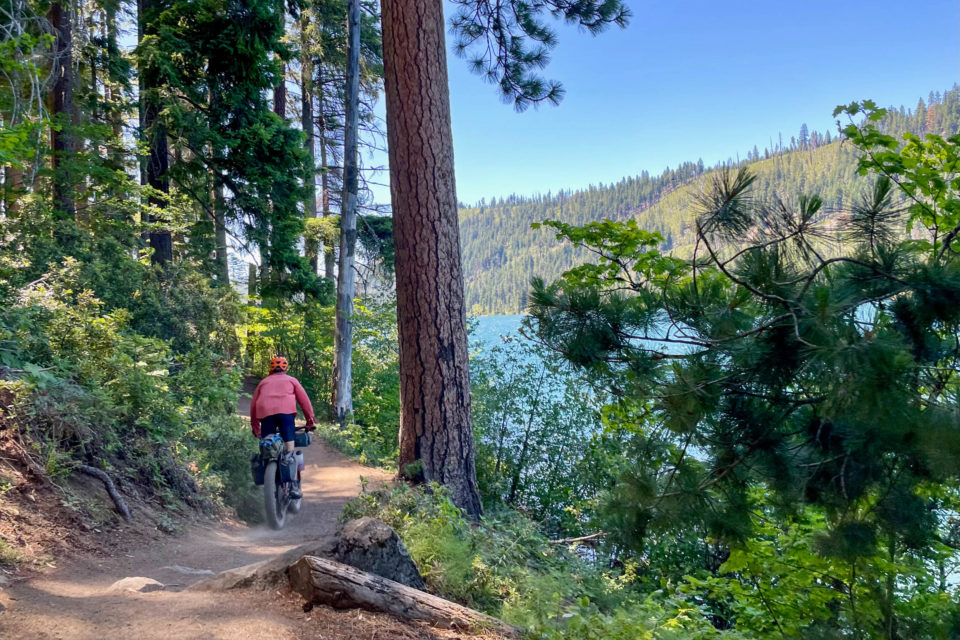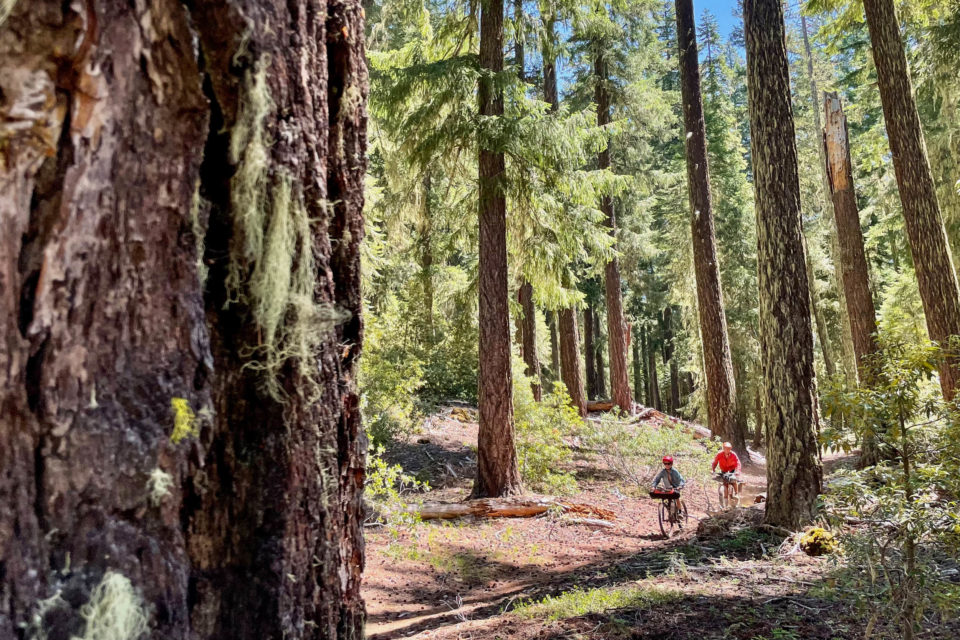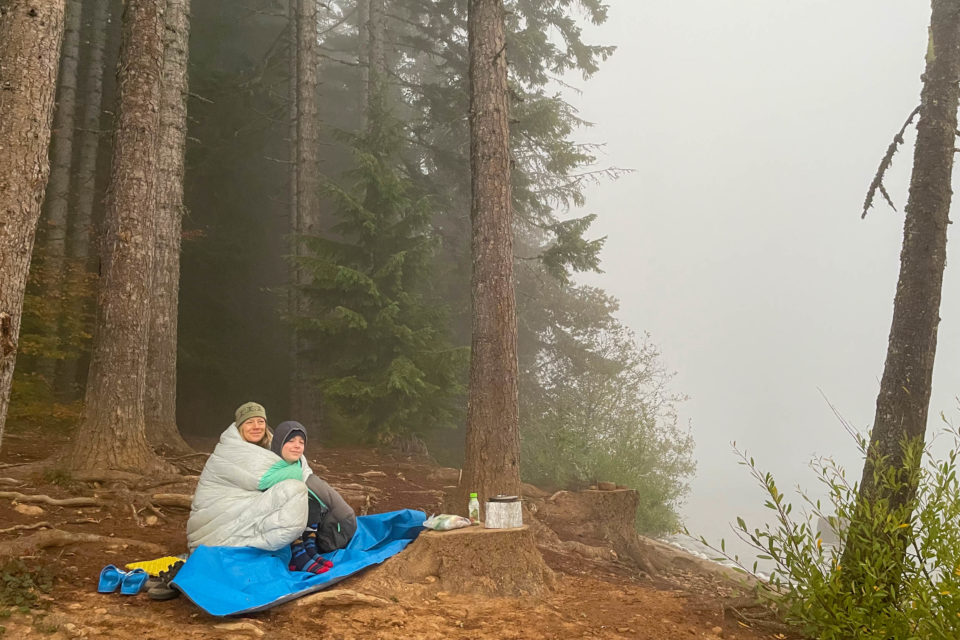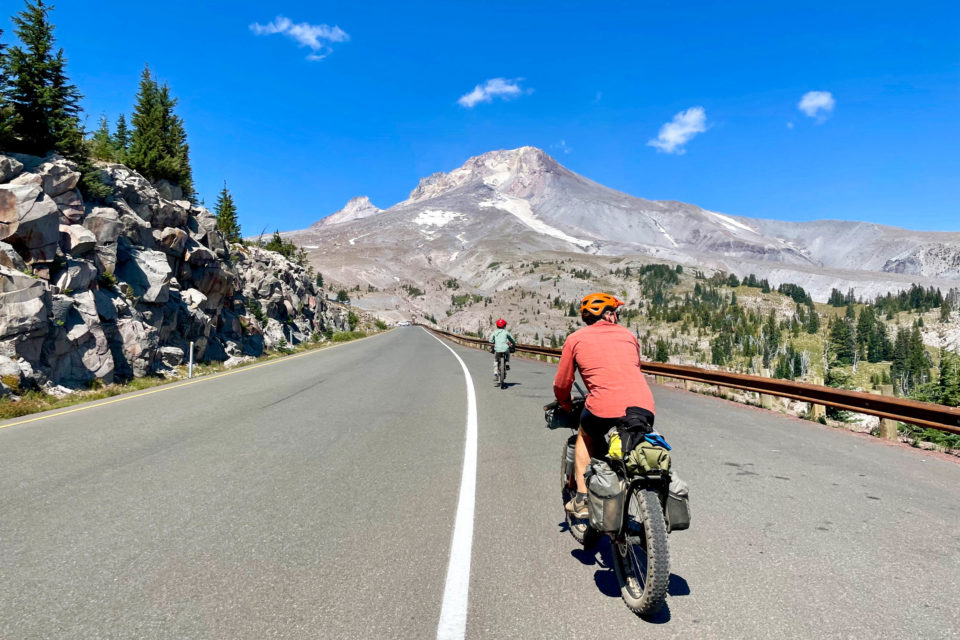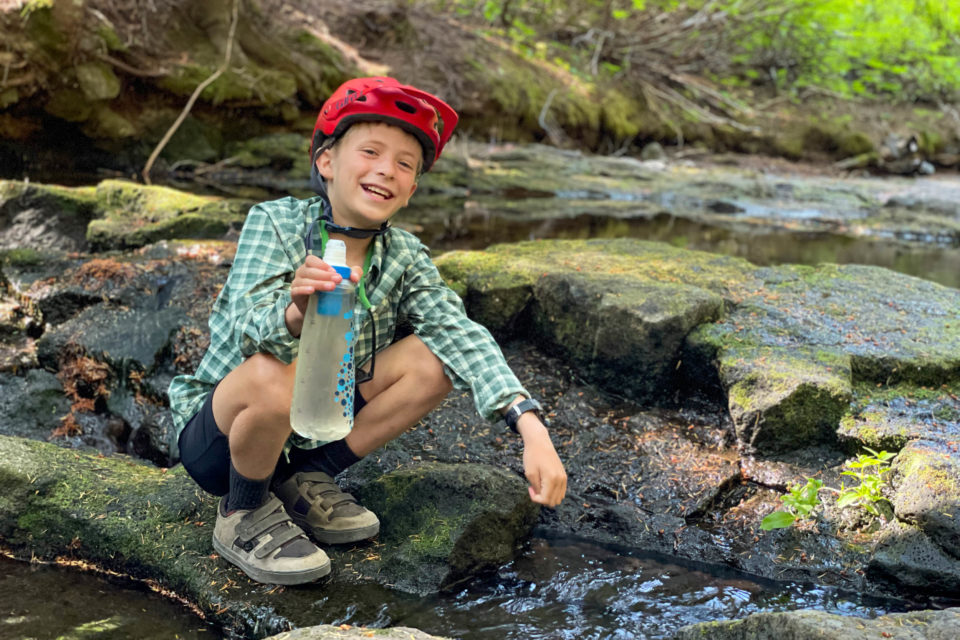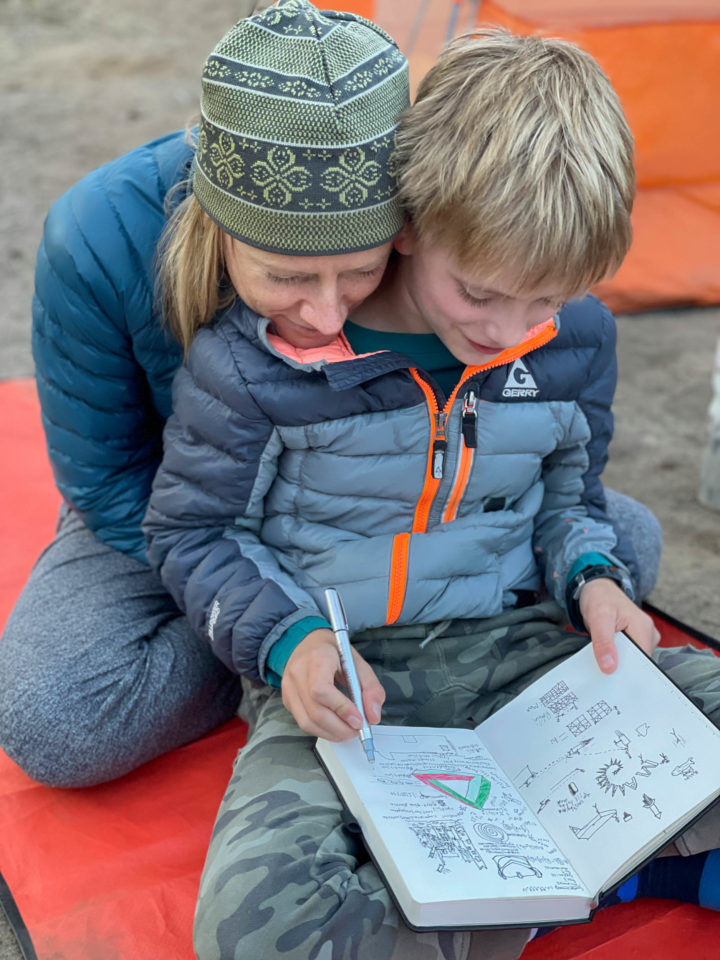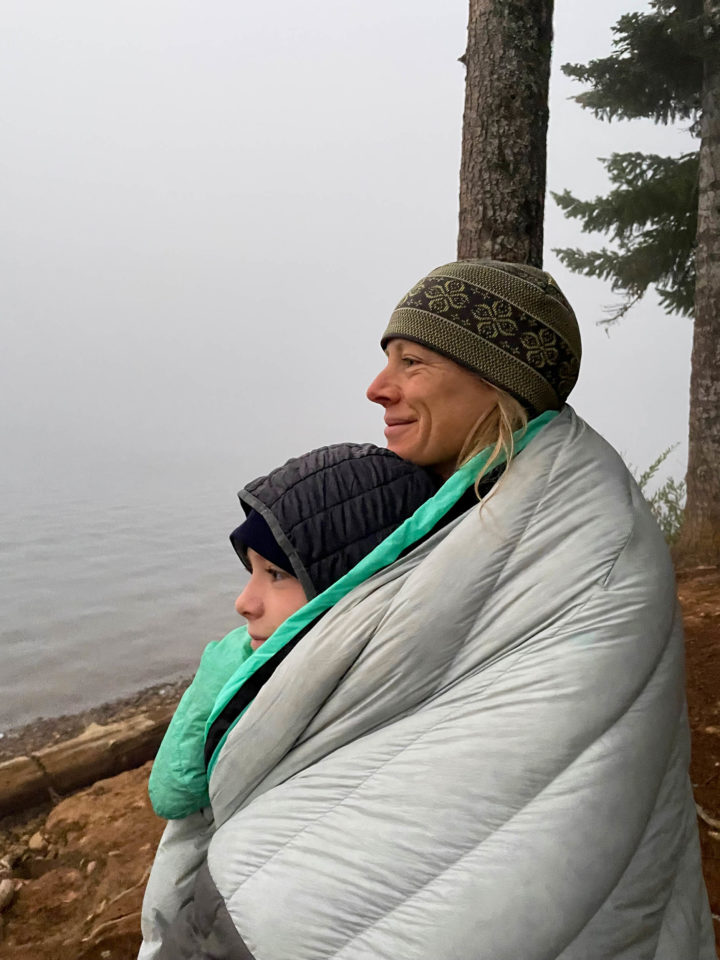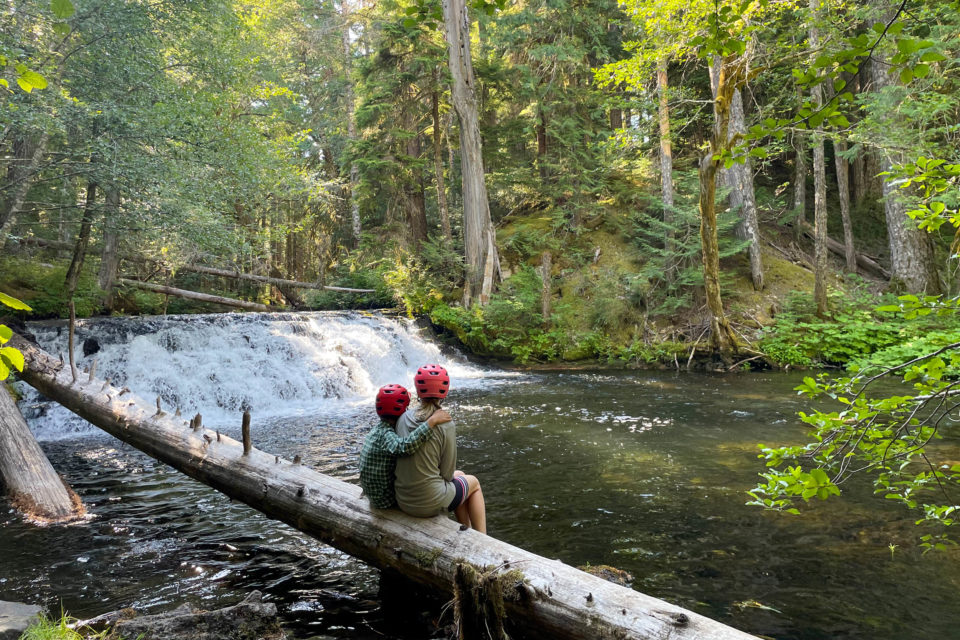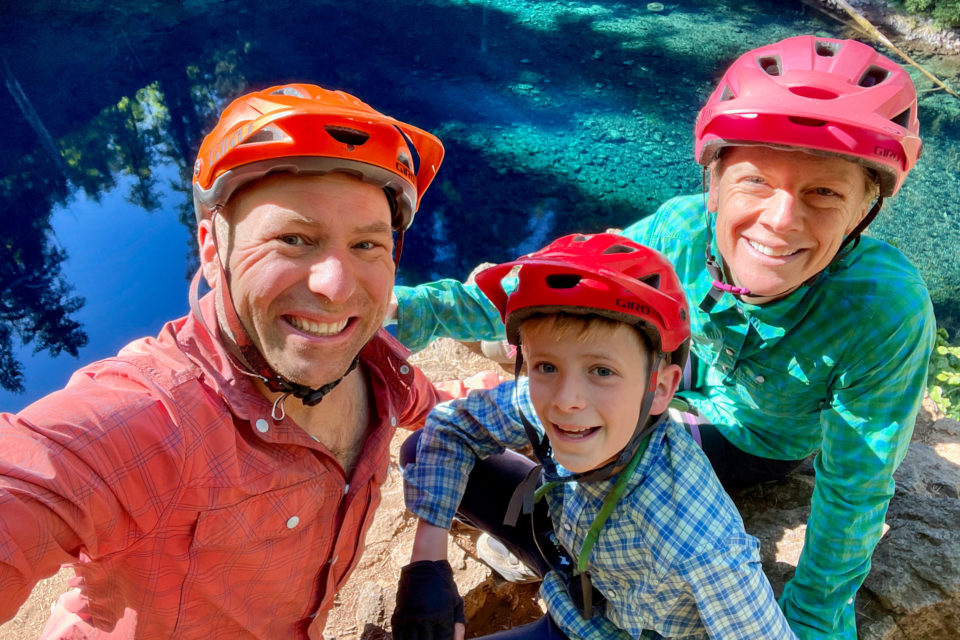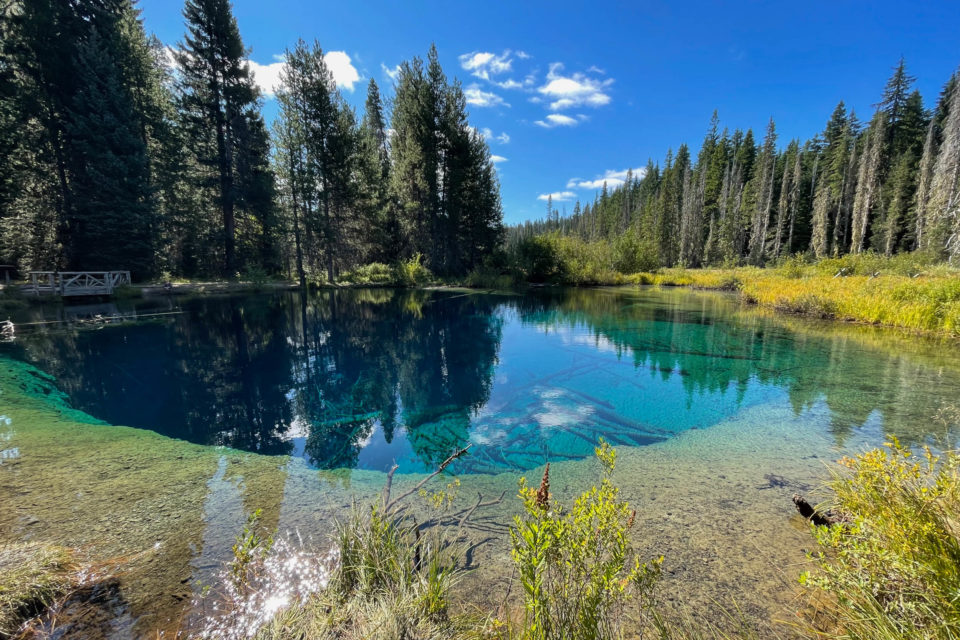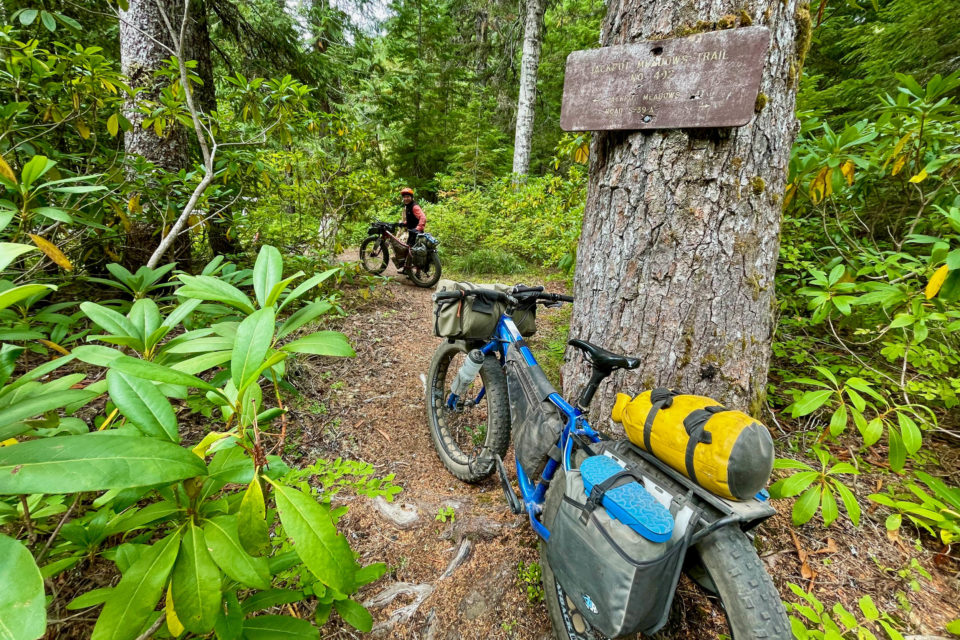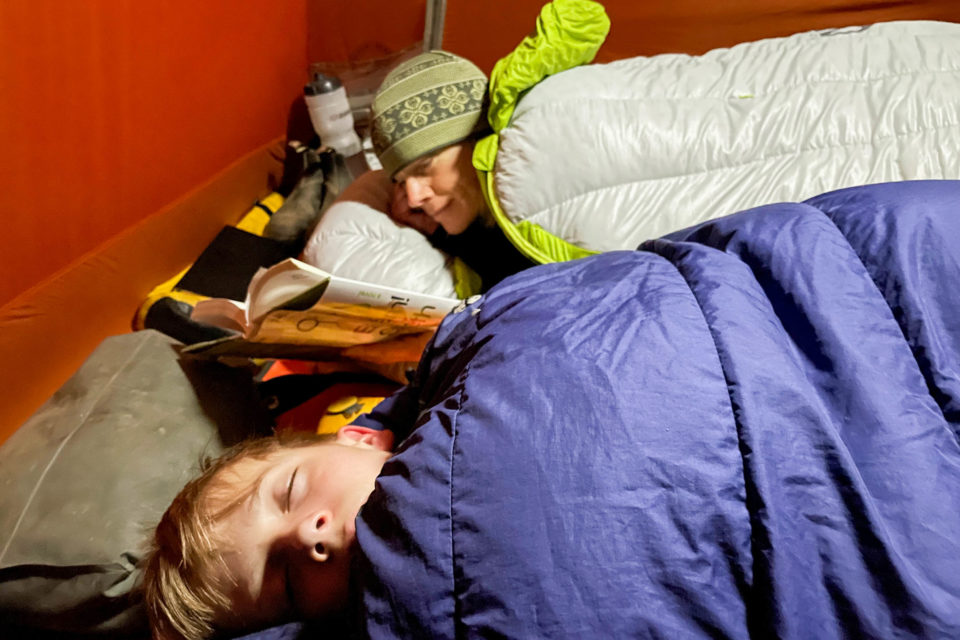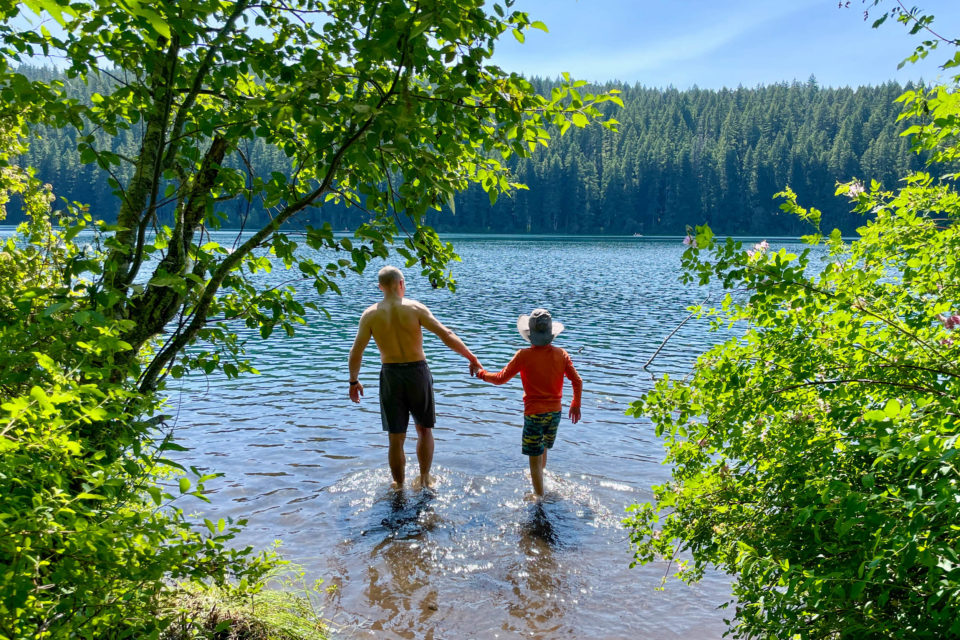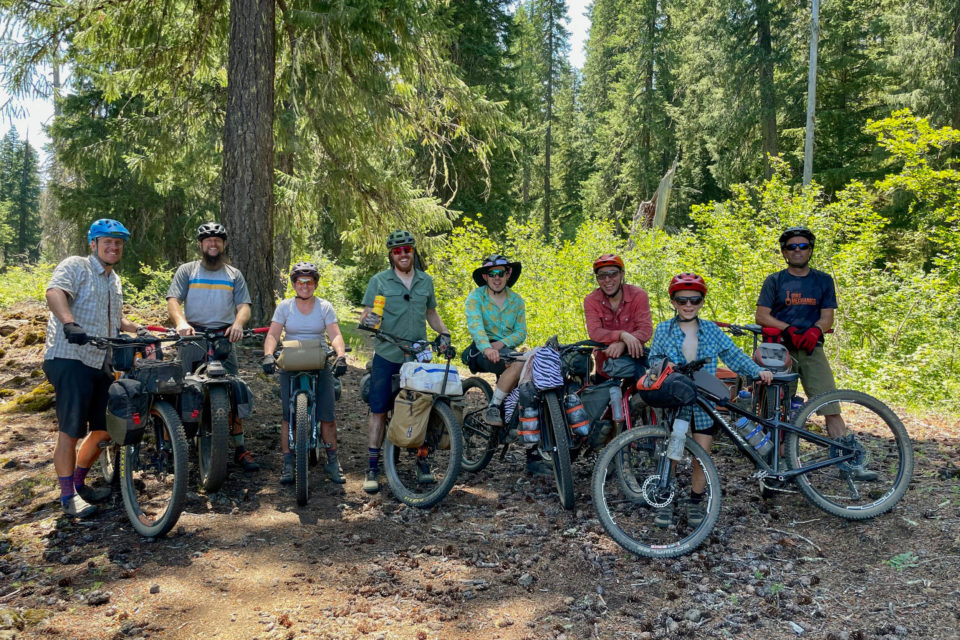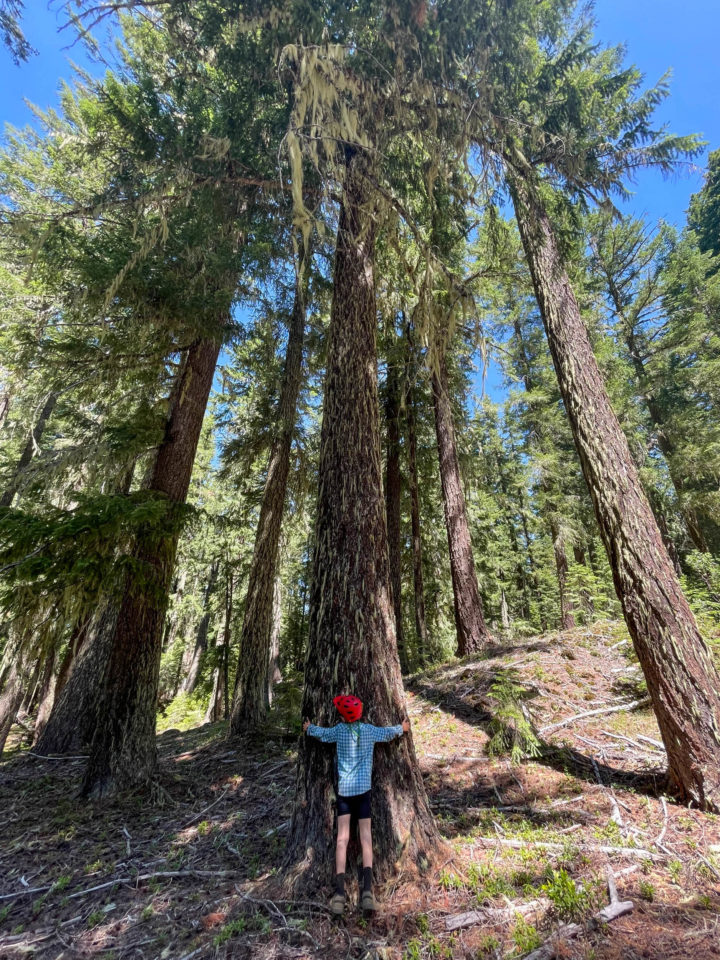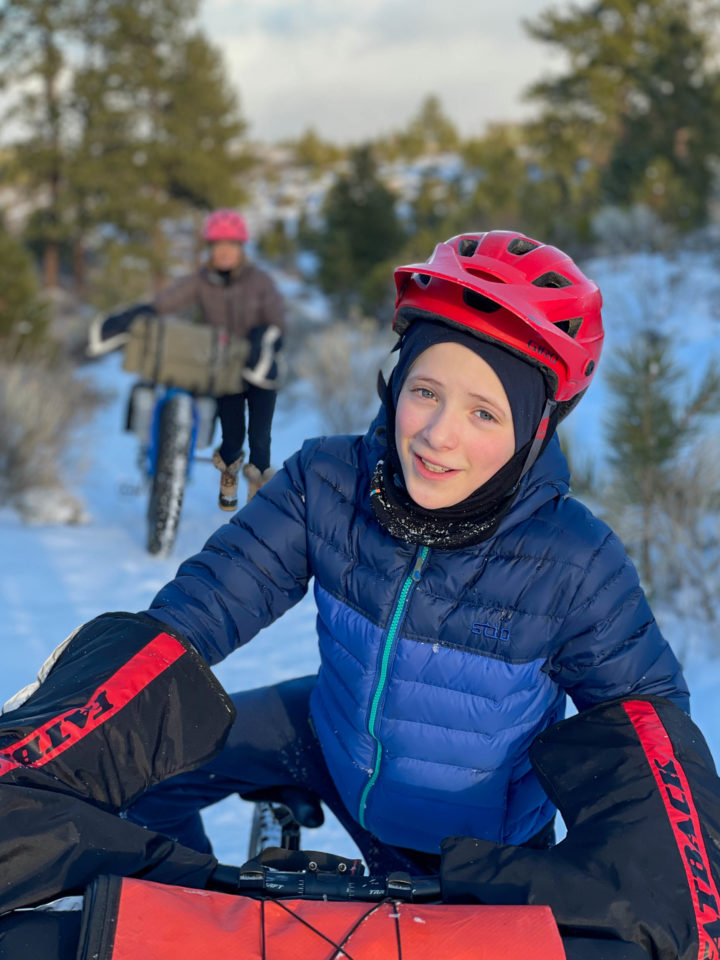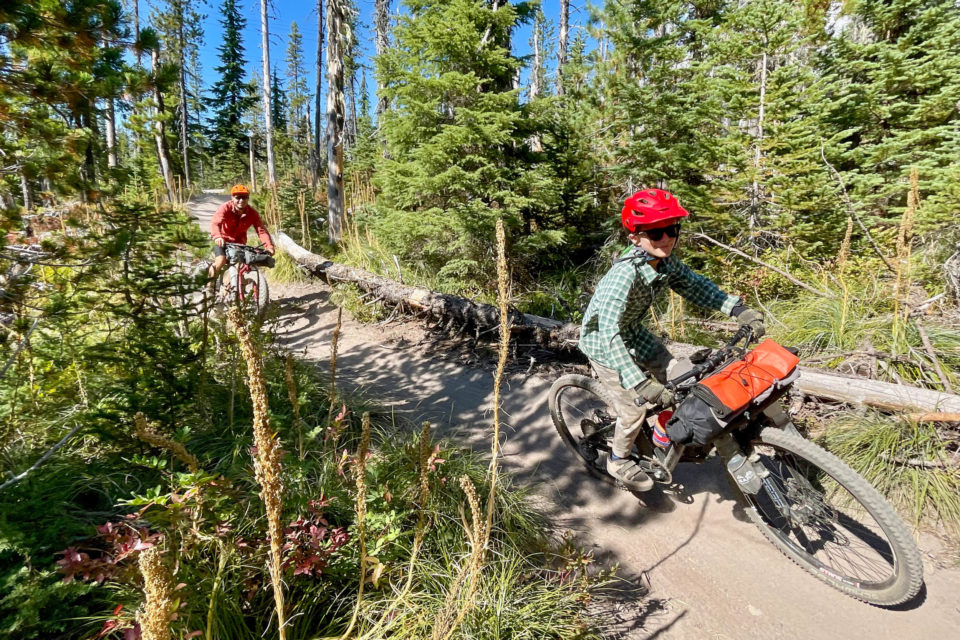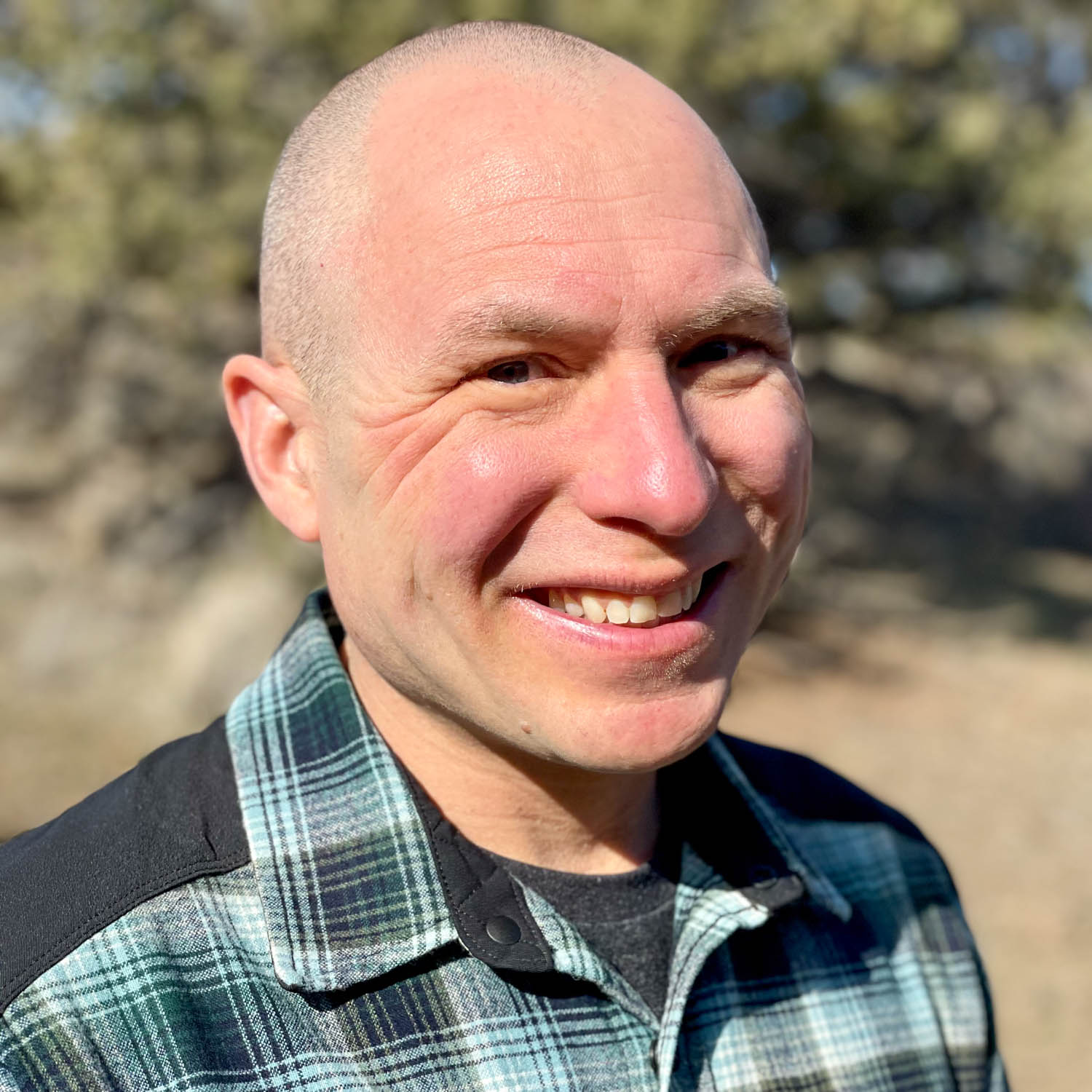A Year of Family Overnighters
Share This
Inspired by our Good Night 2020 campout challenge last year, the Knoth family committed to pedaling out for a family overnighter every month for a year. Read on for their story of growing as a family through their shared love of bikepacking, no matter the weather…
Words and photos by Rob Knoth (@robknoth)
The snow flew straight from the setting sun in the west, biting and stinging our eyes as we pedaled. Tires crunching snow over undulating ice, dodging the potholes from boots long past. Our family alternated between riding at a snail’s pace and pushing our bikes over the wintery high desert landscape toward the safety and hope of a sheltered spot for camp. Was this smart? How bad would the winter storm prove to be? Was it worth it?
Prologue: The Goodnight 2020 Campout
Rewind the clock to the end of 2020, a year that none of us will forget any time soon. No matter where you were in the world, your life was impacted and changed by the events that rocked the globe: pandemic, racial justice reckoning, wildfires and climate change, political chaos. BIKEPACKING.com initiated an event to bring us together virtually, to reflect on the year past, and to look forward to the next—a campout by bike between Christmas and New Year. No restrictive rules. The goal simply being, “To sleep under the stars, have a good night outdoors, and blissfully send off the year.”
Our family had been bikepacking since our son was four years old. Now 11 years old, it was a constant thread through our summer and encroaching on the shoulder seasons. Living in Central Oregon, we’re blessed with great weather, access to public lands, and an expansive network of singletrack and forest roads to explore. It’s a bikepacking paradise. However, when fall turned to winter, we would hang up the bikes and switch to skis. While fun, downhill skiing at a local resort felt like the antithesis of what the rest of the year held.
When bikepacking, we would venture outward, seeking out hidden areas on the map, exploring and camping far from other humans, and nurturing our connection with the environment. Skiing involved a mass of humanity converging on one location, traffic jams, crowded parking lots, lines, mechanical lifts, and what felt like an abuse of the sanctity of the mountain. The dichotomy was painful.
The crazy idea to do a bikepacking overnighter during a season we’d never considered was too tempting to pass up. Even in winter, there would usually be a low snow window where, while cold, it would still be possible. Christmas came, our weather window lined up, and we left from our home to ride a short distance into the edge of the national forest. Drinking hot tea, watching the lights of the city twinkle below, the wind twisting through the pines, we felt at peace and at home. It was perfect. A strong morning gust flattened the poorly anchored tent, adding some spice to the mix. But, by the time we were rolling back into our garage with visions of hot coffee and breakfast, we knew we had tapped into something special.

We hatched a plan to keep this going. We committed to a bikepacking trip at least once per month, all year. The Goodnight Campout had shown us how doable it was. Yes, there was some type-2 fun involved, but with the right attitude, and enough down insulation, it worked. During the shoulder seasons, we weren’t focused on miles. For those who have not done one, the concept of an overnighter might seem silly. While the overhead packing and unpacking are the same for a week-long trip, and the time out is short, the return is infinite. The distance you ride is immaterial, and the battery recharge you gain from a night out is magical. It brings me back to being a kid, running to play in the forest behind our house, thinking I would stay out forever, only to be lured back into the creature comforts of home by the smell of cooking stew or casserole. Only this time, you stay in Narnia and don’t have to leave the wardrobe. Taking the mischief of an overnighter and executing it during a time of year normally associated with indoors and brief visits to the outside makes it even more powerful.
January 2021: Skyline Forest
January came, and while the mountains were encased in snow, the high desert still only had patches of ice and frozen dirt. We pedaled out over a weekend in the middle of the month, aiming for the same area where we’d camped in December. This time a little wiser, we headed just into the forest and out of the potentially raging winds in the open plain. The riding was enjoyable and less cold than expected. Our tent was pitched in a sheltered grove of trees, on pillow-soft pine needles, but anchored extra well—a lesson learned from our December surprise. We strung up a small set of Christmas lights inside the tent, and after finishing dinner and hot drinks, settled into our sleeping bags for a long night of reading, talking, and listening to the gentle breeze in the pines.
When morning came, it felt like being a kid at Christmas. We had done it. I made hot drinks for the pedal home and planned on cooking up hot, blueberry pancakes from the warmth of our home. We rode back joking and laughing, giddy with the excitement of the adventure about to unfold for our family over the coming months and rides. We had broken the spell of “the offseason” and were unlimited.
February 2021: The End Already?
Our weather window closed after the January campout. Snow and cold blanketed the high desert—a blessing for the extreme drought gripping the western states but less than ideal for bikepacking. We filled our weekends with backcountry nordic skiing, happily escaping the crowds of downhill skiers at the resorts, spinning plans for learning alpine touring skiing the next winter. But, at the end of each of these adventures, we returned to the empty echo that we were one weekend closer to missing a February bikepacking campout. After the success of December and January, we were at a crux. Was our year-long project already doomed, even before it really got started?
This was a sobering moment. Our “project” didn’t really matter beyond the life we chose to breathe into it. We could easily give up. Nordic skiing made infinitely more sense with the snow. The act of riding our bikes and camping wasn’t going to change the world. For anyone who’s ever grappled with type-2 fun, this feeling is familiar. The seductive pull of giving up, quitting, giving in to the negative voices in your head that point out all the reasons something won’t work. What kind of “streak” has a zero in the second slot? February ended without us making a trip.

March 2021: The Lost Forest
Never let perfect be the enemy of good. Despite not making February work, we weren’t going to give up on the project. Bikepacking (and time in the outdoors in general) teaches you resilience. Having a shared definition of what “success” looks like is important. We don’t always get this right, but we’re pretty darn good at it as a family. For us, “success” didn’t mean perfect. It meant doing what made sense and learning to enjoy bikepacking in places and seasons we normally wouldn’t. It meant not giving up because we missed February.
With that in mind, we headed out for March. The snow had started to retreat in the high desert to the east. Before the pandemic, we’d framed a beautifully drawn map of Oregon and started to highlight our family’s bikepacking routes. This living document was as much a guide for where we had ridden as it was a spotlight on the areas of our state left to explore. One area, in particular, had always intrigued me: the Lost Forest.
The Lost Forest is an isolated stand of majestic ponderosa pines, long since separated from the rest of their family by over 40 miles of shifting sand dunes, in the Christmas Valley area of Oregon. The sand dunes continue to encroach on the remaining trees, giving the area a haunting aspect of isolation, despair, and the valiant struggle of nature to survive and never give up. It was a fitting place to rally our family’s year-long project.
The drive was long—through lodgepole pine forests, climbing up and over volcanic rims, and down into the sweeping sagebrush sea of Christmas Valley. We parked and then pedaled into the Lost Forest. Our route circled the stand of pines, heading out into the vast emptiness of the valley and back. It was painfully beautiful. Wide-open vistas stretched out to the horizon, unbroken. We settled in a designated campsite for the night, in awe of the trees and their stoic struggle. The moon rose over the sagebrush and we bedded down for the night.
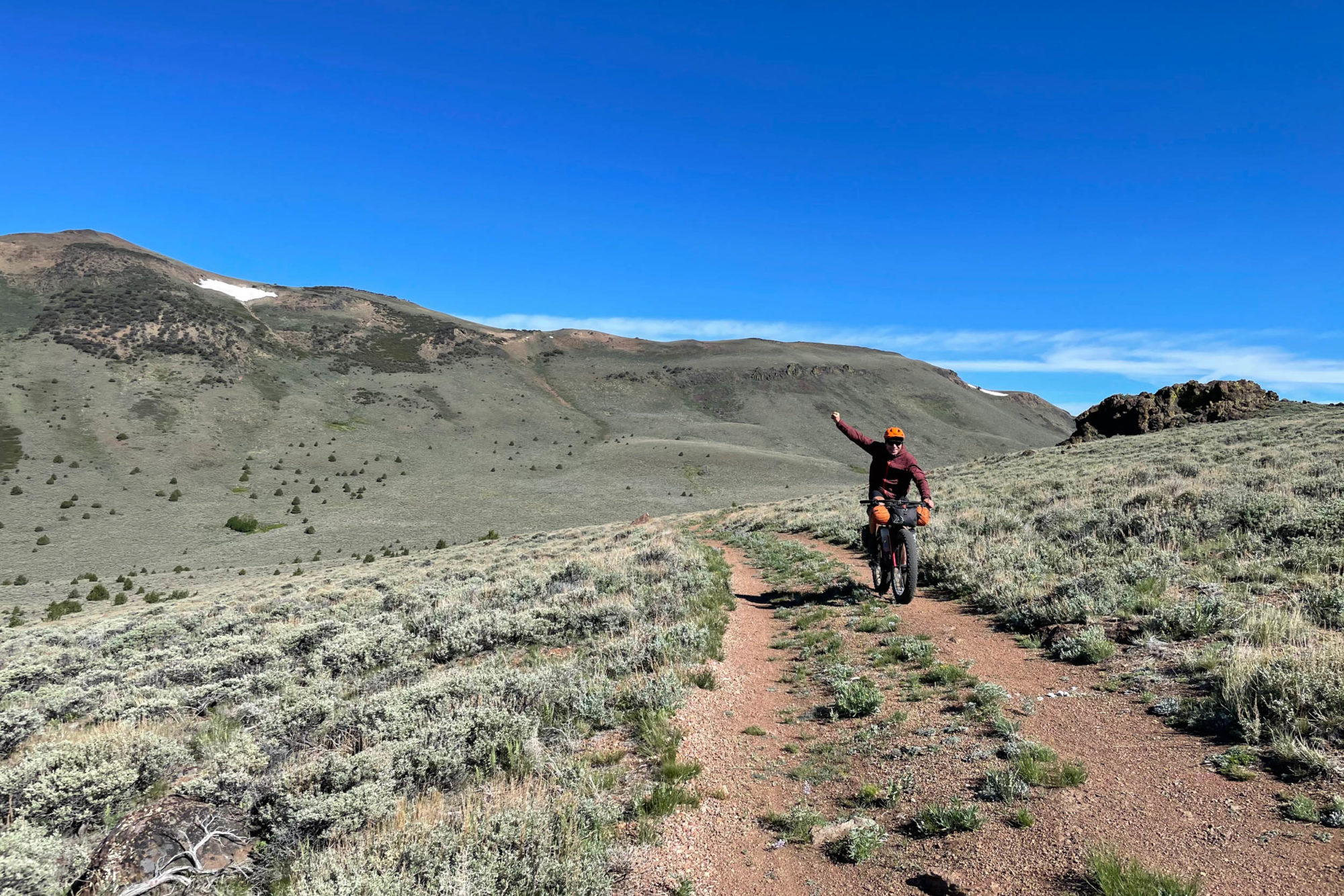
Refueled by our experience in the Lost Forest, we decided to double up in March to make up for missing February. A long weekend gave us the freedom to gaze even farther afield. We settled on a place storied in Oregon bikepacking history: the Alvord Desert. I’d done a solo trip here years ago, new to bikepacking, and poorly timed it with the summer heat. Late March looked to be cold but dry enough that the playa would be rideable and the snakes would still be absent. We headed out.
Our route went east across the empty playa, arced through Big Sand Gap, the sagebrush plateau beyond, and back from the south of the playa. Big Sand Gap holds a special place in my heart, as it was a place of legend for me in the stories of bikepacking in Oregon. Oregon bikepacking owes its roots to Donnie Kolb of Velodirt and Gabe Amadeus Tiller and the crew at Limberlost. I vividly remember reading blogs and early social media posts from their early scouting of routes in the area, and Big Sand Gap has always held awe, mystery, and power when I glanced at the map on the wall. Being there for the first time, as a family, now solidly into the yearlong project, was perfect. My son Max and I scrambled up from camp to a cliff overlooking the playa to the west and sagebrush to the east as the sun cast its last warm rays over us.
April 2021: Hole in the Ground
Oregon has a bountiful amount of diversity in landscapes, but unfortunately, it falls a little short in the name game. Our destination for April’s overnighter: Hole in the Ground. Geologically, it’s a large maar—a volcanic explosion crater. Linguistically, the name is a testament to the lack of creativity of the wagon train settlers in the region. We rode through the hole, up the other side, and struck eastward to the sagebrush and wide-open landscapes of the Oregon Outback. After a day touring through sandy roads, old farm remains, and washboard gravel, we headed back into the ponderosa forest.
We made camp at the base of a butte and settled in for a freezing night. Spring was here from a calendar perspective, but the high desert still wasn’t done playing with the last scraps of winter. The next morning was Easter, and true to form, we scattered plastic eggs with candy inside around our campsite, much to Max’s delight.
As we headed back to our car, we were all filled with a strong sense of accomplishment and positivity. The next month would be May. Back to the traditional “bikepacking season” with a wider range open to riding, warmer temps, and longer days. We’d made it through the most challenging part and were excited for more.
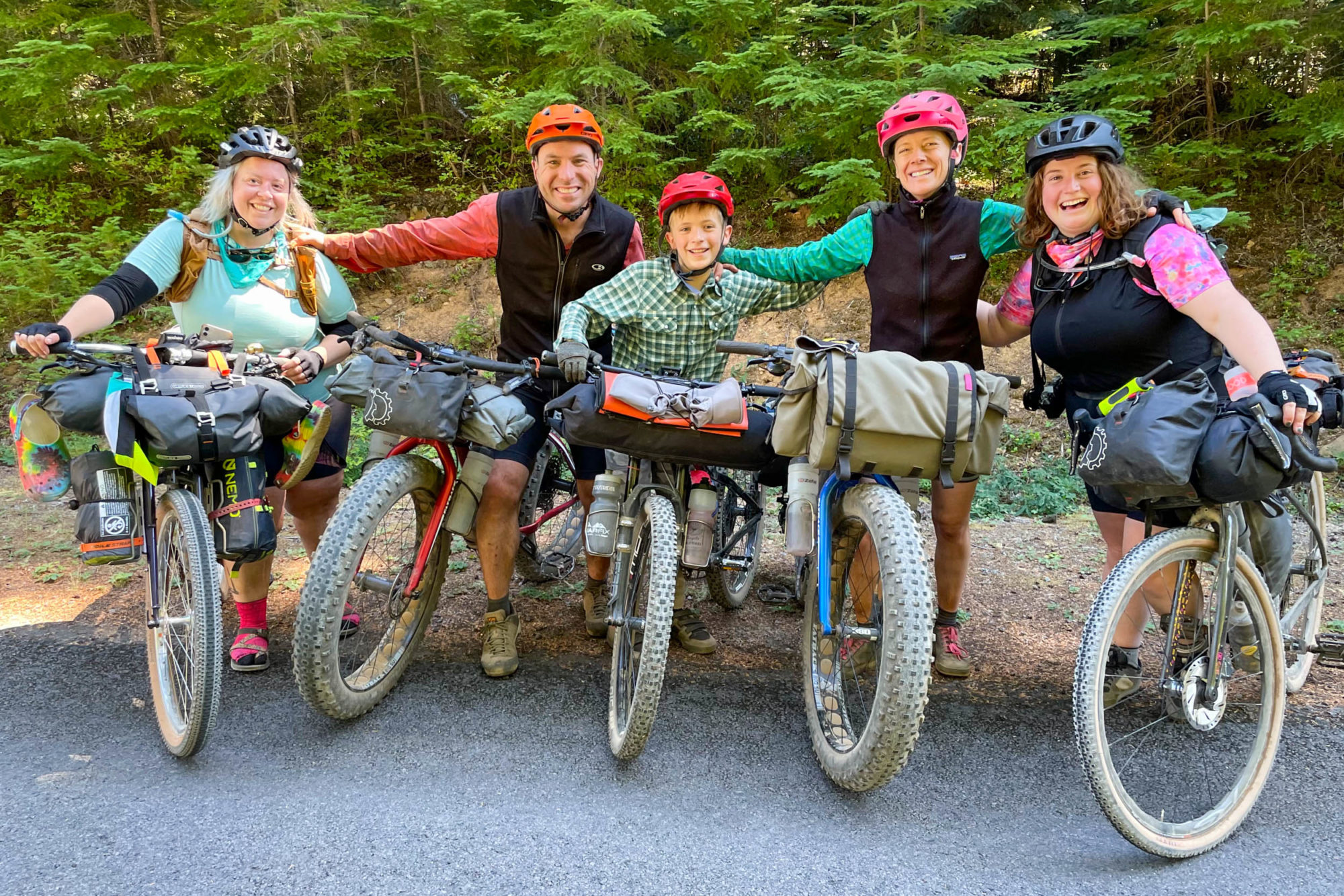
Spring and Summer 2021
The trip to the Alvord also foreshadowed what would be another tense season of fire in the west. We ran into smoke on the route (from a controlled burn, we later learned). When we arrived back home, an early season wildfire just a few miles from our home sprang up. Smoke and fires almost put a big stop to our project later in the season. The harsh reality of climate change and the extreme drought in the western states has turned mid-summer through early fall into its own season—one where the air is unsafe to breathe and trips need to be planned with the added analysis of wind patterns, AQI observations, and escape routes.
Luckily, late spring and early summer were free of fires, and we took advantage of it. Many weekend trips and a few week-long adventures were had. We explored areas new to us—the Hart Mountain Antelope Refuge, most notably, and ones very familiar. Camp Sherman and the Metolius Valley have started to look like a spiderweb of highlighter on our family bikepacking map. We rode and camped with other people for the first time—extra special after the isolation of 2020. We hung up the tandem bike midway through 2020, and Max had grown into an incredibly capable bikepacker on his own.
Spring and summer of 2021 saw some long singletrack family trips up and over the Cascade Crest and down magical trails like the Oregon Timber Trail and McKenzie River Trail. Max riding on his own also gave Dawn Rae and me more time to ride and talk—the constant metamorphosis and growth of a family and a marriage. Time spent adventuring in nature strips away so much of the noise, distraction, and pretense that happens in “normal life.” I’m truly thankful for the honesty, simplicity, and experience that bikepacking as a family has given us.
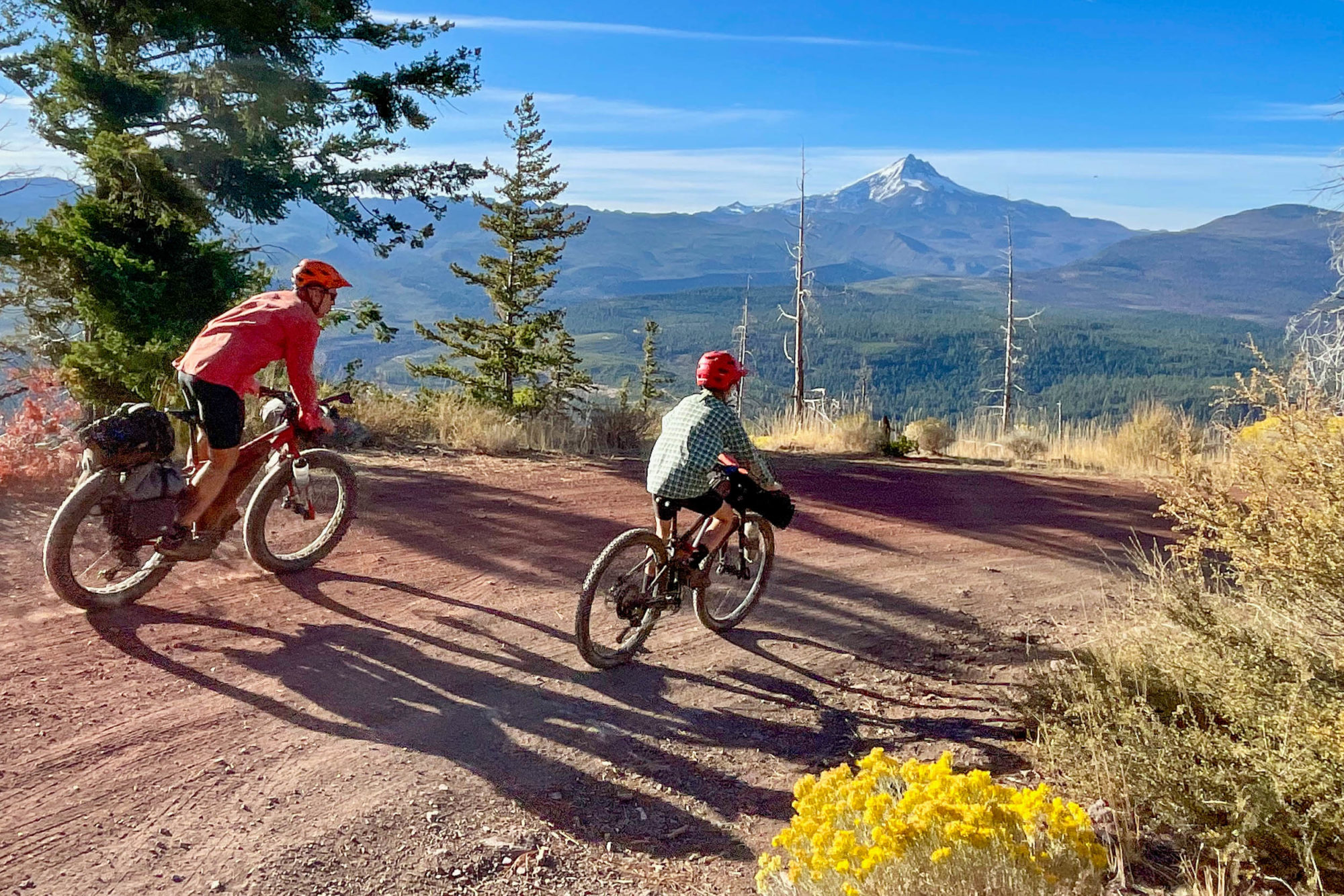
When the smoke from the various fires burning in all directions settled in, riding and bikepacking became much more difficult. We just managed a campout in late August on a Saturday night and rode home through thickening smoke and washed-out, sandy trails on Sunday morning. This pushed us north in search of clean air, big trees, and loamy goodness around Mt. Hood and Southern Washington. Dawn Rae put together some amazing trips using existing routes from Ride with GPS, BIKEPACKING.com, Our Mother The Mountain (heir to the Velodirt legacy), and her own creativity, maximizing singletrack and minimizing pavement.
These trips grew an increased awareness of how much our family team was strengthening. The caliber of routes we were routinely tackling were ones that Dawn Rae and I would happily ride as individuals, not something that we would have associated with “family routes.” The change in a year was dramatic, and it inspired us to keep pushing. It almost seemed like a distant memory to think of our (pandemic canceled) plans back in March 2020 to ride the Montañas Vacías route in Spain on the tandem. When the ability to travel internationally returns, that trip will be much different, as we’ll be stronger and more independent riders.
November 2021: Return to Skyline Forest
The fall was a glorious one for bikepacking. Rains finally returned, extinguishing the fires surrounding us and transforming the moondust desert soil into tacky riding beauty. We took advantage of this for many late fall trips. Eventually, the season changed and chilly rains and freezing temperatures returned. November came, and we were faced with the familiar problem from earlier in the year: how would we make this work to finish off the year of bikepacking?
Muscle memory helped make the decision for us. We snuck in an overnighter ahead of Thanksgiving break back to Skyline Forest, where we camped back in January. Retracing the route, making old jokes, and reminiscing about the many trips since, we were happy. It’s rare for us to camp in the exact same location twice, but this felt right. The forest had deposited another layer of soft pine needles and a scattering of sharp cones, but the trees and view were unchanged. As riders and humans, we had grown, but the forest welcomed us back just the same. So often when we roll out on a trip, it feels like coming “home.” This one had that feeling tenfold.
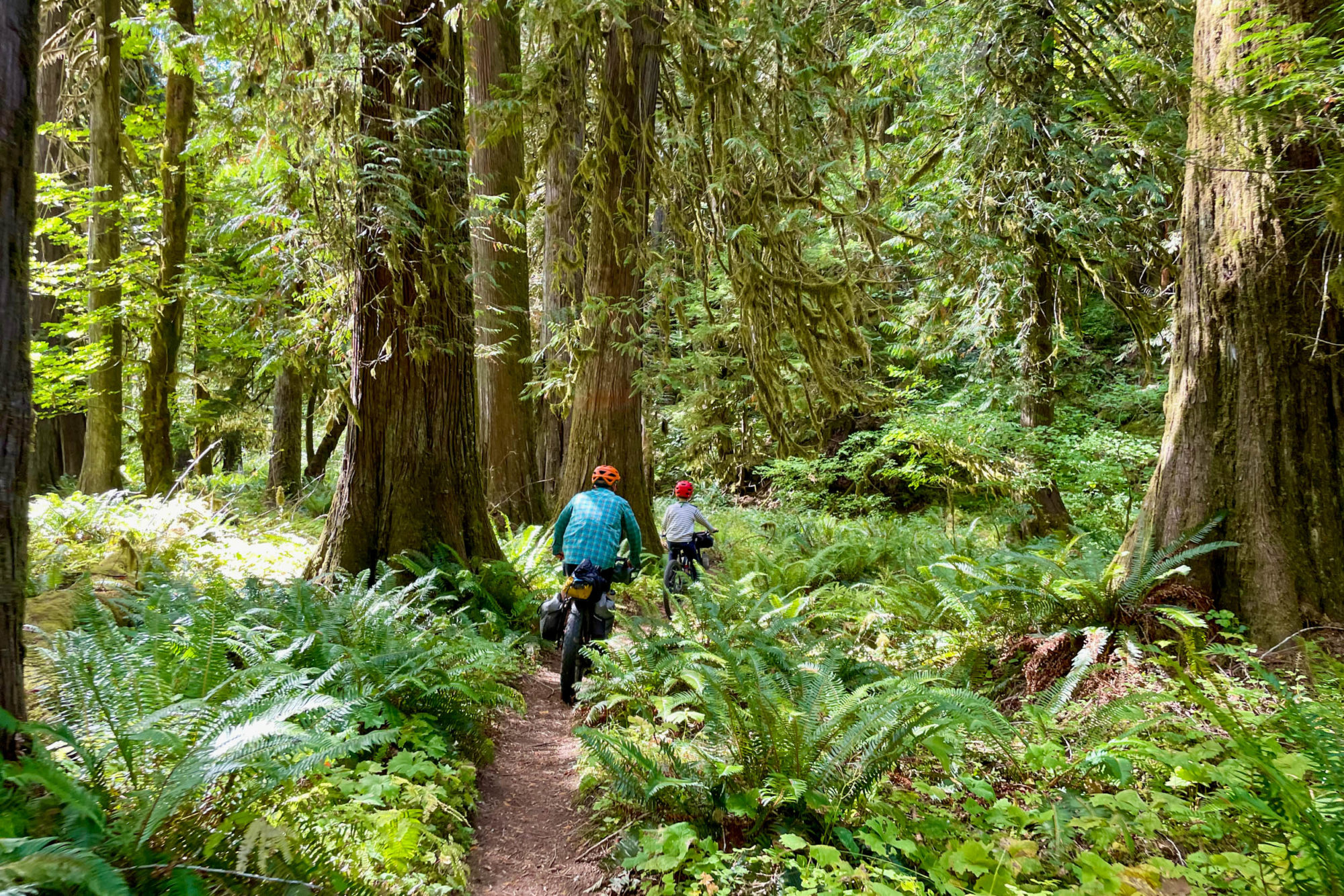
December 2021: Goodnight 2021 Campout
December saw unseasonably warm weather and amazingly tacky dirt for riding. It was a mountain biking paradise and a wonderful reminder of why we called Central Oregon home. Unfortunately, each weekend ended up being consumed with other activities, and the December campout kept getting pushed. The FDA approval for vaccines in Max’s age, and our own boosters, were wonderful gifts and reminders of hope for the eventual end of the pandemic and return to adventures farther afield. We happily sacrificed a warm-weather weekend to schedule shots.
BIKEPACKING.com announced the successor to the inspiration for our yearlong project, the Goodnight 2021 Campout. There was no doubt that this would be a fitting way for us to finish. A fitting bookend to a fantastic year of memorable trips, lessons learned, and a stronger connection to the world around us and each other. As luck would have it, winter also decided to join us. Winter storms came to Oregon in force during the final weeks of December. The high country rapidly returned to what it should look like in winter. Snow piled up, winds howled, and the temperature dropped. As Christmas approached, a winter storm descended. Snow blanketed the ground in town, and the familiar trails leading into the national forest turned from tacky dirt into slick snow and ice. Temperatures dropped into the teens, and the three of us looked at each other with skepticism about plans for a campout.
The idea of pushing our bikes from the garage to the backyard and setting up a tent was floated and almost agreed on. Dawn Rae and I went for a walk in our neighborhood, debating what we should do, given the dire forecast. What was really important for us? How much did the campout matter, especially with the reality of a snowy night and frozen ride home the following morning? The forecast was for the storm to only strengthen from Christmas onward to the New Year. If we were going to do this, we needed to decide and act. We returned home and packed up our bikes with equipment that seemed out of place next to skis and normal winter activities. Max did a quick test of his narrow tires on the snow and ice-covered street in front of our house to validate that it wouldn’t be a total disaster. By early afternoon, we were headed out.
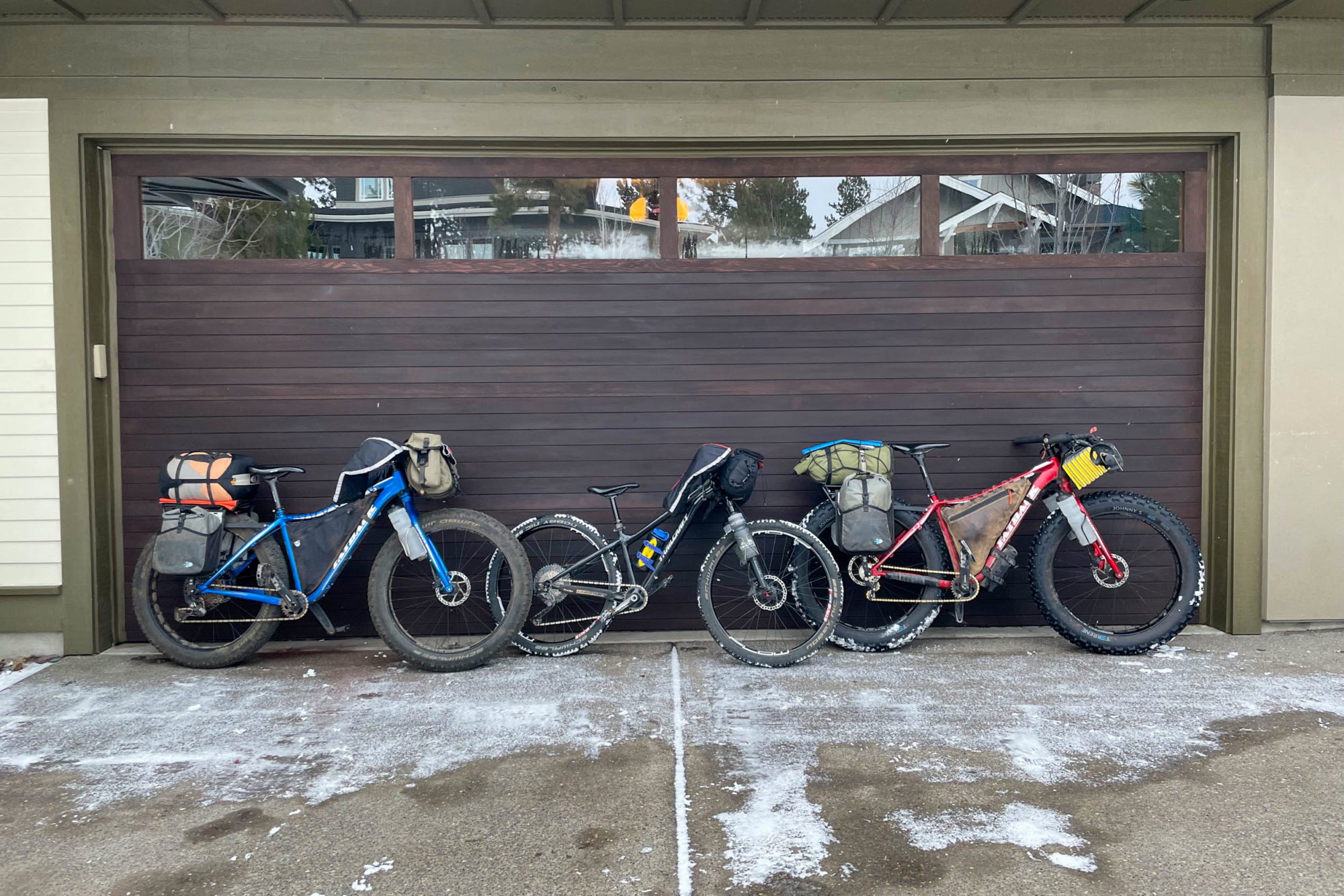
We rode when we could and pushed and walked when we couldn’t. The sun poked through the darkening clouds and made the blowing snow appear like a magical shower of diamonds. We laughed (and cursed) at our madness and the fact that we were knowingly heading into a snowstorm to spend the night. We opted for a spot in the national forest almost ridiculously close to home, but still feeling like we’d had a ride. After some frustrating bike-pushing, we arrived. Remembering our experience with the blown-down tent a year ago, Dawn Rae chose a sheltered grove of trees for our site. The tent was erected, sleeping mats inflated, water boiled for drinks and dinner, and we settled into our home away from home.
The night passed without event, and after a finger-numbing repacking of camp on our bikes, we were off. Whoops of joy and laughter at the ridiculousness of what we were doing echoed through the early rays of morning and the snow-covered landscape. We rolled into our driveway, beaming with accomplishment, as individuals and as a team. We had done it.
Epilogue: Finding Meaning
Looking back on the year, there’s a question about what it all really mattered. We started the year with confidence in our bikepacking skills, which were never in doubt. We had many good adventures in the years prior without needing to “push the boundaries” by bikepacking in months when it really didn’t make sense. Enjoying a night out in the winter can be done just as well on skis as on a bike—even more comfortably and in locations likely more scenic. So, what did it matter that we ticked off a bikepacking trip each month?
To be honest with myself, it did matter. It mattered from a sense of connection. While we didn’t ride the same route each month, we adventured in our state through every season. Seeing the changes in the landscape, the serene quiet of winter, the boisterous awakening of spring, the hazards of summer, and the soft hug of fall healing the scars and pain. Our year of campouts was magical. It connected us even stronger to this place we call home, to the earth around us, and to each other.
This goal was important for many reasons, and it wasn’t easy. It had many moments of difficulty, conflict, challenge, and ridiculousness. There were many points where it made sense to quit. But, to keep going, to re-evaluate and change tactics/routes, to adapt and grow, that was the power behind all of it. You quickly forget the pain, the cold, and the frustration when you’re back in the comfort of your home, your job, your daily life. But you don’t forget the spark of mischief and the shared humor from making it through difficult situations.
The knowledge that you have something inside yourself, and between members of your family or team, that’s bigger than you knew and that can rise up when needed to be counted on and to make it through. The softness needed to comfort yourself and the ones you love when they’re struggling. The skills to repair, replan, and ride when things don’t work out as expected. Those gifts are priceless, and we’re forever grateful for having had the year to discover them together.
Please keep the conversation civil, constructive, and inclusive, or your comment will be removed.












